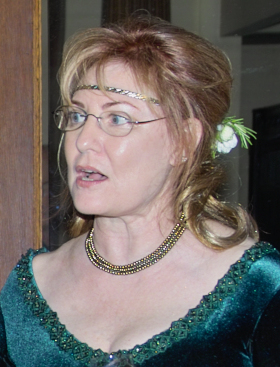Article: The Heart of Community
We all know that community is important, but how exactly do we go about establishing it? What are the building blocks that enable us to reach the end goal of a network of connected folks who can rely on each other, look after each other, share the good times and support one another in the bad? I'd like to tell the story of a relative of mine, Bobbie, and describe the steps she took to transform her neighborhood into a community, and the role that community played in supporting one of its members.
When Bobbie and her husband Tom moved into a new townhouse development in 1996, Bobbie made it clear with her neighbors, from the start, that she wanted to live in a community of friends, not just a neighborhood where people drive into their garages every night and go directly into their houses, then turn around and do the reverse the next morning. One of her good friends, David, recalled that when he first met her at a party that she had organized in the neighborhood, she made a point of saying, “This is not going to be a neighborhood of strangers. We are all going to get to know each other, we are going to like each other, and we are going to create a neighborhood that everyone dreams of living in, but most neighborhoods are not like that.” And Bobbie set out to create such a place. She was the one who recommended to the neighborhood board that there should be a social committee to sponsor events and parties for the community. She reached out to her neighbors and formed friendships that grew and deepened over time. Her friends in the neighborhood became part of her family and were invited over for Christmas at her house. She and Tom took even vacations together with their neighbors and best friends Rick and Carlos. Many in the neighborhood saw Bobbie as the heart of their little corner of the world and the instigator of creating community in that place.
But Bobbie also made it clear that she expected her neighbors to want the same thing she did: to be a part of a community of people who look out for each other. It was frustrating for her when someone new moved in and rejected her overtures of friendship or refused to play nicely with others.
Forging friendships by getting to know your neighbors: that is the key building block that Bobbie's example demonstrates for how to create community. How did Bobbie do this?
First, Bobbie made time for other people. Her friends and neighbors knew that if they needed her, they could pick up the phone and she would be there. Her home was always open to visitors. She said her connections with other people were important, and her actions backed this up.
Second, Bobbie was open to all types of people. Many of her best friends were gay men. Although she was Caucasian, her circle of friends included people from all races and backgrounds. She was genuinely interested in other people's life experiences and enjoyed sharing her own.
Third, when Bobbie thought she had made a mistake, she tried to correct it. Emmanuel, a friend and former neighbor, told me that when he and Bobbie first met, the interaction was not good; she later talked to him to try to figure out what went wrong and how she could make it right, and they became good friends. Several years later, he and his partner hosted Bobbie and Tom's twentieth anniversary vow renewal in the side yard of their home.
Many friends and neighbors that I spoke with said Bobbie accomplished what she set out to achieve. She and Tom had a network of friends, a community, who cared about all its members.
Tragedy struck in the fall of 2008 when Bobbie was abducted from a suburban shopping mall in broad daylight and killed in a carjacking gone bad.
In the horror of those circumstances and the grief that followed, the community she worked so hard to create rallied around Tom. Friends brought food to the house, comforted Tom, helped him plan Bobbie's memorial service and created and printed the program for the service. And in the months that followed, they continued to support Tom in all kinds of ways, with gestures big and small. Joe, their across-the-street neighbor of six years, flew with Tom cross-country for Bobbie's interment. Friends took turns looking after Tom in the evenings and on the weekends. They invited Tom to dinner, out to a movie, or over for drinks when he needed company, and left him alone when he said he preferred that. Friends also helped Tom honor Bobbie's memory. Bobbie loved animals, so for Christmas of 2008, rather than exchange gifts with each other, Tom and his friends made donations to the local animal shelter. Many friends contributed to a fund to buy trees and a park bench to be installed in the local dog park. And slowly, with the help of the community that Bobbie thoughtfully and lovingly knit together over the years, Tom has started to heal.
In one individual's darkest hour, the community shone at its brightest, providing a hopeful and comforting presence that touched the heart. The connections that Bobbie created with others, the invisible, caring web that links her friends and neighbors – her community – is what now supports those left behind after her death. The kind of place she dreamed of living in became a reality, thanks to her efforts. It is the lasting legacy she leaves behind.

